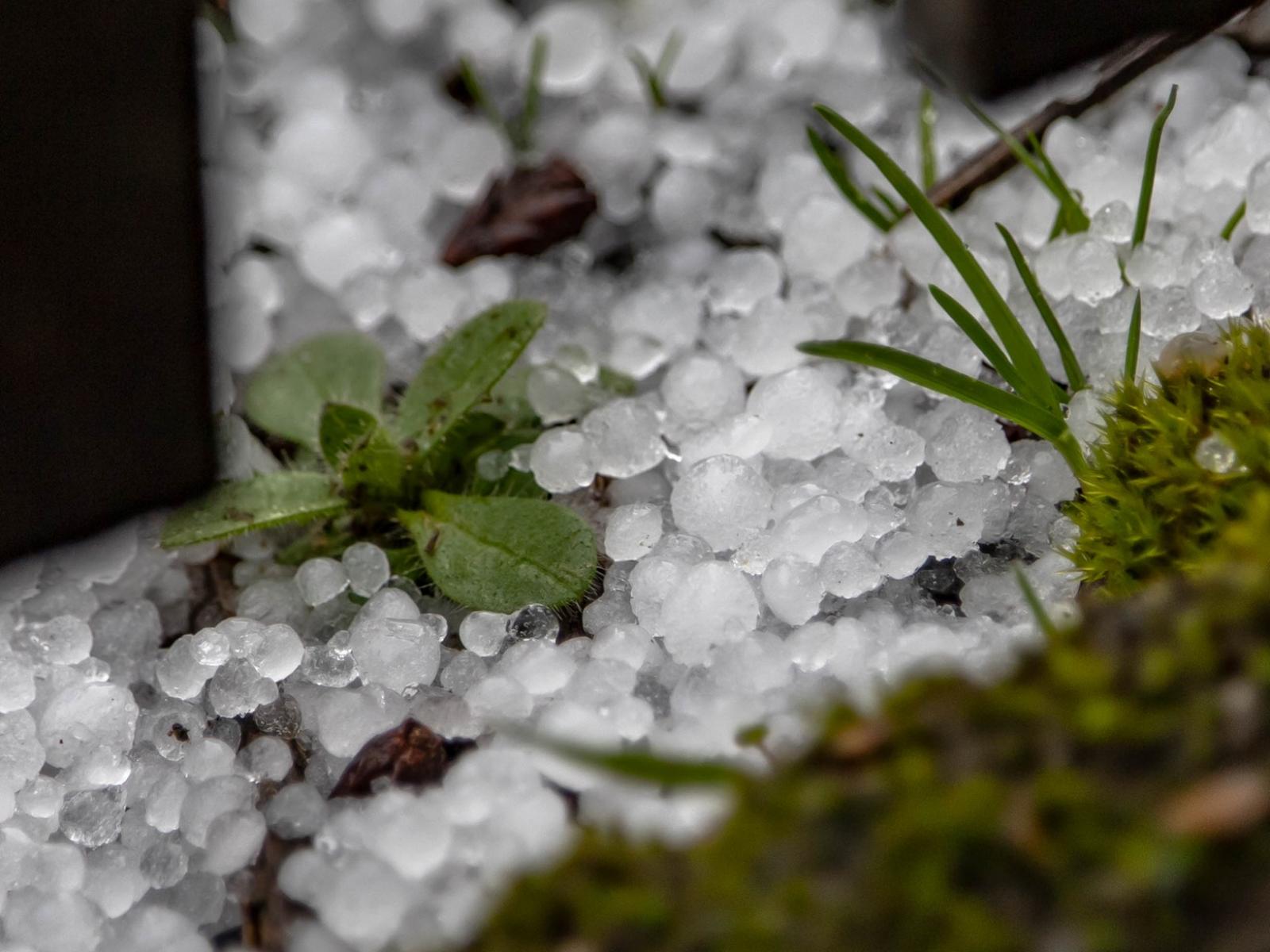Identifying Northern Great Plains Hailstone Characteristics and the Factors Influencing Them
El Niño-Southern Oscillation, North Atlantic subtropical high, low-level jet, and water vapor transport from Gulf of Mexico influence hail occurrences

The important factors affecting interannual hail variability over the Northern Great Plains are quite different from those that affect the Southern Great Plains.
The Science
Hailstones are a natural hazard that cause considerable economic losses and property damage annually in the United States. A research team studied yearly and geographic variations in severe and significant severe hail over the Northern Great Plains (NGP) states from 2004 to 2016. They found that severe and significant severe hail occurrences demonstrate considerable year-to-year variability with an overall increasing trend over the studied decades. Researchers identified that four factors—the El Niño-Southern Oscillation, North Atlantic subtropical high, low-level jet (LLJ), and LLJ-controlled integrated water vapor transport—can explain 78% of the interannual variability in the number of significant severe hail reports.
The Impact
Before this work, few studies focused on hail characteristics over the NGP and the associated contributing factors. The researchers studied hail from two sources along with environmental conditions from 2004 to 2016 during the summer season, when hail is most frequent in the NGP. The contributing factors to hail activity in this region may help forecast summer hail activity using statistical models in the NGP. These factors differ from those that affect the Southern Great Plains (SGP), which were previously discovered to be sea surface temperature anomalies over the northern Gulf of Mexico, aerosol loading, and the El Niño-Southern Oscillation.
Summary
Researchers studied severe and significant severe hail occurrences during the summer over the NGP (June–August) during 2004 to 2016. They also conducted analysis of hail reports for an extended period (1994–2016) to more robustly investigate the contributing factors. Both severe hail (1″ < diameter ≤ 2″) and significant severe hail (diameter > 2″) were examined with similar results obtained. The occurrence of hail over the NGP demonstrated a large interannual variability, with an overall positive slope. The increase is mainly located in the western part of Nebraska, South Dakota, and North Dakota. Researchers found that three major dynamical factors—the El Niño-Southern Oscillation, North Atlantic subtropical high, and LLJ—most likely contribute to the hail interannual variability in the NGP. Adding integrated water vapor transport strongly controlled by LLJ gives four factors that can explain 78% of the interannual variability in significant severe hail reports. Hail occurrences are higher in La Niña years than in El Niño years due to a strengthening of the LLJ and water vapor transport. Interestingly, the important factors affecting hail interannual variability over the NGP are quite different from those for the SGP, except for the El Niño-Southern Oscillation.
PNNL Contact
Jiwen Fan, Pacific Northwest National Laboratory, Jiwen.Fan@pnnl.gov
Funding
This study is supported by the U.S. Department of Energy Office of Science Early Career Award Program. Pacific Northwest National Laboratory is operated for the U.S. Department of Energy by Battelle Memorial Institute under contract DE-AC05-76RL01830. C. Homeyer was supported by the National Science Foundation under Grant AGS-1522910 and the National Aeronautics and Space Administration under Award NNX15AV81G. This research used resources of the National Energy Research Scientific Computing Center, a U.S. Department of Energy Office of Science user facility operated under Contract No. DE-AC02-05CH11231.
Published: September 28, 2021
J.-H. Jeong, J. Fan, and C. R. Homeyer, “Spatial and temporal trends and variabilities of hailstones in the United States Northern Great Plains and their possible attributions,” Journal of Climate, 34, 6819-6840, (2021). [DOI: 10.1175/JCLI-D-20-0245.1]